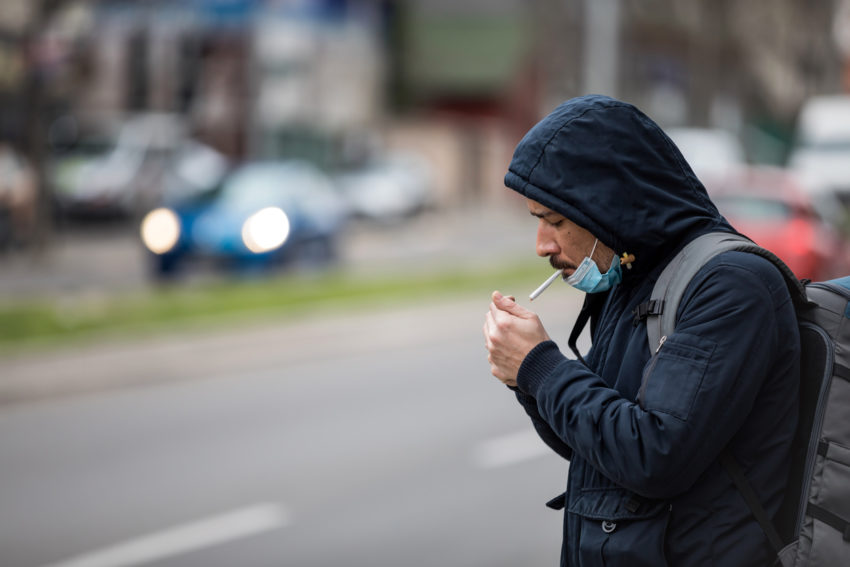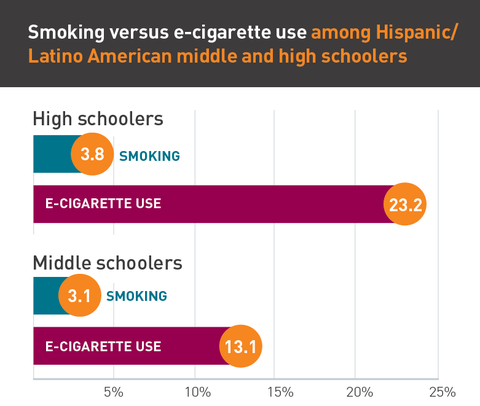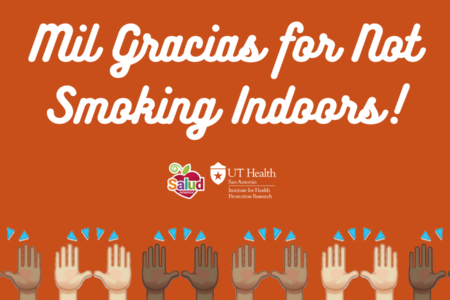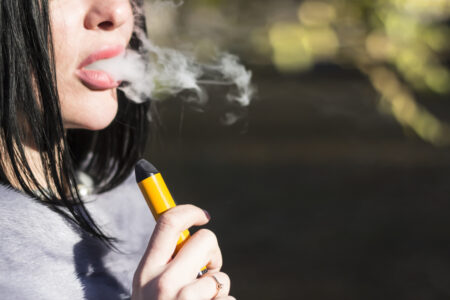
Share On Social!
In the fight to end smoking, mass media efforts to change social norms have led to historic declines in smoking.
But the tobacco industry isn’t giving up.
These companies aggressively market flashy, new electronic and flavored products in hopes of growing the market among youth and young adults.
Still, these individuals are not so easily swayed. Young people overwhelmingly distrust the tobacco industry, especially Latinos and other youth of color, according to a recent report from The Truth Initiative.
“The good news is that the public is as distrustful as ever of the tobacco and vaping industry, despite their extensive public relations and marketing strategies. For now,” according to the Truth Initiative website.
Wins and Losses in Public Health Leaders’ Efforts to Curb Smoking, Vaping
Smoking rates are down.
Several reasons exist for the decline. Mass media campaigns have changed social norms by highlighting serious health effects. Changes in taxes and laws accounted for 64.8% of the increase in smoking cessation and the reduction in everyday smoking. Implementation of state and local clean indoor air laws and cigarette taxes have encouraged smokers to quit or reduce their smoking frequency.
But smoking still occurs. And vaping is on the rise.
 Flavored e-cigarettes are continuing to drive the youth vaping epidemic, with more than eight in 10 young users (82.9%) reporting they use flavored e-cigarettes, according to the 2020 National Youth Tobacco Survey.
Flavored e-cigarettes are continuing to drive the youth vaping epidemic, with more than eight in 10 young users (82.9%) reporting they use flavored e-cigarettes, according to the 2020 National Youth Tobacco Survey.
“One in five high school students (19.6%) and one in 20 middle school students (4.7%) reported being a current e-cigarette user and new Truth Initiative research shows that young people who vape [have seven times higher odds of going on] to smoke cigarettes,” the Truth Initiative even found.
This shows just how “powerful, persuasive and addictive the industry and its products are,” according to the Truth Initiative.
“Understanding youth perceptions of tobacco companies is critical to counteract industry efforts to protect its bottom line for generations to come,” the agency states.
Key Survey Findings on Young People’s Perceptions of the Tobacco Industry
Truth Initiative researchers surveyed nearly 10,000 young people ages 15-28 from September to December 2019.
Key findings are include:
- 92% of respondents believe that vaping companies lie about how harmful their products
- 69% believe that vaping companies are dishonest about the health effects of their products.
- 79% believe that the tobacco industry uses fruit and candy flavors to get young people to try e-cigarettes.
- Younger adults were generally less trusting of the tobacco industry than older adults. Younger adults were also surer of their opinions and knowledge of the industry.
 These sentiments are even stronger among youth of color.
These sentiments are even stronger among youth of color.
- When asked if tobacco companies lie about the harmfulness of their products and if they believed tobacco companies want young people to try vaping so they start smoking, more African American and Hispanic or Latino youth agreed strongly or very strongly.
- When asked if tobacco companies are honest about the health effects of their products, white and Hispanic or Latino youth disagreed more intensely than African American youth.
- African American youth and young adults were less sure than other racial groups if tobacco companies use fruit and candy flavors to get young people to try e-cigarettes.
“For all youth and young adults — and African Americans in particular — these patterns indicate vulnerability to tobacco industry messaging and a critical opportunity for education and outreach,” according to the report.
What Does this Means for Smoking and Vaping Among Latino Youth?
Once they’ve started, Latinos are more likely to keep smoking and only half as likely as whites to quit smoking successfully. Hence, Latinos find it harder to quit smoking.
Nearly 1 in 10 Latino adults currently smoke cigarettes.
Despite comparatively lower rates of smoking, smoking is the leading preventable cause of morbidity and mortality among U.S. Latinos.
And, according to the latest reports, e-cigarettes are the most commonly used tobacco product among Latino high school students (23.2%) and middle school students (13.1%). Overall, 10.5% of middle schoolers and 27.5% of high schoolers use e-cigarettes.
 Tobacco companies have a history of targeting racial and ethnic minorities, including the Latino population. Another research study from Truth Initiative found internal tobacco industry documents that reveal the industry’s interest in Latino communities because they deemed the population “easy to reach” and “undermarketed.”
Tobacco companies have a history of targeting racial and ethnic minorities, including the Latino population. Another research study from Truth Initiative found internal tobacco industry documents that reveal the industry’s interest in Latino communities because they deemed the population “easy to reach” and “undermarketed.”
On top of that, the COVID-19 respiratory pandemic is making things a little worse.
Latinos have worsening health inequities, disparities in exposure, testing, prevention and treatment, and job impact amid the pandemic.
Many health experts say smoking and vaping increase the severity and risk of COVID-19, and studies have already shown that smoking is associated with a substantially higher risk of COVID-19 progression.
What We Can Do to Promote Smoke-Free Environments?
The new “Mil Gracias (A Thousand Thanks) for Not Smoking Indoors!” campaign from UT Health San Antonio is inviting people to share gratitude for smokers who respect others’ air during the COVID-19 respiratory pandemic: 
- Email a “thank you” to smokers who protect others by not smoking indoors.
- Sign a letter acknowledging the health dangers of secondhand smoke exposure.
- Share the need to reduce secondhand smoke in multifamily dwellings.
The Mil Gracias campaign features English and Spanish flyers with key messages to help people reduce their risk for smoking-related diseases and COVID-19.
“Smokers have the power to slow the spread of disease and COVID-19 by not smoking indoors, thus protecting people from secondhand smoke dangers and the possibility of coronavirus airborne transmission,” said Dr. Amelie G. Ramirez, health disparities researcher and director of Salud America! at UT Health San Antonio. “Smokers who do not smoke indoors deserve our thanks.”
Quitting is a main way to lessen the health consequences of tobacco.
“If people are worried about COVID-19 and having an infection or getting a severe infection, there’s one thing you can do quickly, and that is you can quit smoking, and you can quit vaping,” Darcy Ellefson, a respiratory therapy program specialist at the Sanford Wellness Center in Sioux Falls, said to the Aberdeen News.
Quitxt is a bilingual service from UT Health San Antonio, and the Cancer Prevention and Research Institute of Texas. It can help you to quit smoking amid the COVID-19 pandemic. Quitxt sends messages via phone texts or Facebook Messenger chat to help South Texas adults quit smoking.
Messages help with motivation to quit, setting a quit date, handling stress, and using nicotine replacement.
Join Quitxt in one of two ways:
- Text version: For English, text “iquit” to 844-332-2058. For Spanish, text “lodejo” to 844-332-2058.
- Facebook Messenger version: Go here and just hit “send message.”

Even if you don’t smoke, you can share Quitxt and help your friends and family.
Learn more about Quitxt text-message program in English or Spanish to help you quit smoking today!
By The Numbers
142
Percent
Expected rise in Latino cancer cases in coming years



